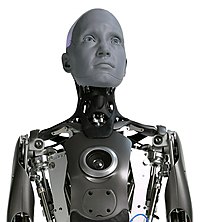
Photo from wikipedia
Actuators and sensors can be allocated in mechanical systems using the analysis of the closed-loop system, i.e., the positioning problem can be integrated with the active control problem, leading to… Click to show full abstract
Actuators and sensors can be allocated in mechanical systems using the analysis of the closed-loop system, i.e., the positioning problem can be integrated with the active control problem, leading to a more general optimization problem. This problem is, however, difficult to solve. In the case of the candidate locations being discrete positions, the optimal solution can be found using a combinatorial method, which may become impractical because the number of available candidate locations increases. Thus, the main contribution of this paper is to devise a systematic procedure based on the simulated annealing method to allocate active elements in discrete places, simultaneously with the controller design problem for multiple-input and multiple-output systems. For this, the $${\mathcal {H}}_{\infty }$$ H ∞ norm of the closed-loop system was considered as objective function, and the controller was obtained using the Riccati equations. Results show that the proposed algorithm obtained the optimal solution with fewer iterations compared to the combinatorial method.
Journal Title: Journal of the Brazilian Society of Mechanical Sciences and Engineering
Year Published: 2020
Link to full text (if available)
Share on Social Media: Sign Up to like & get
recommendations!